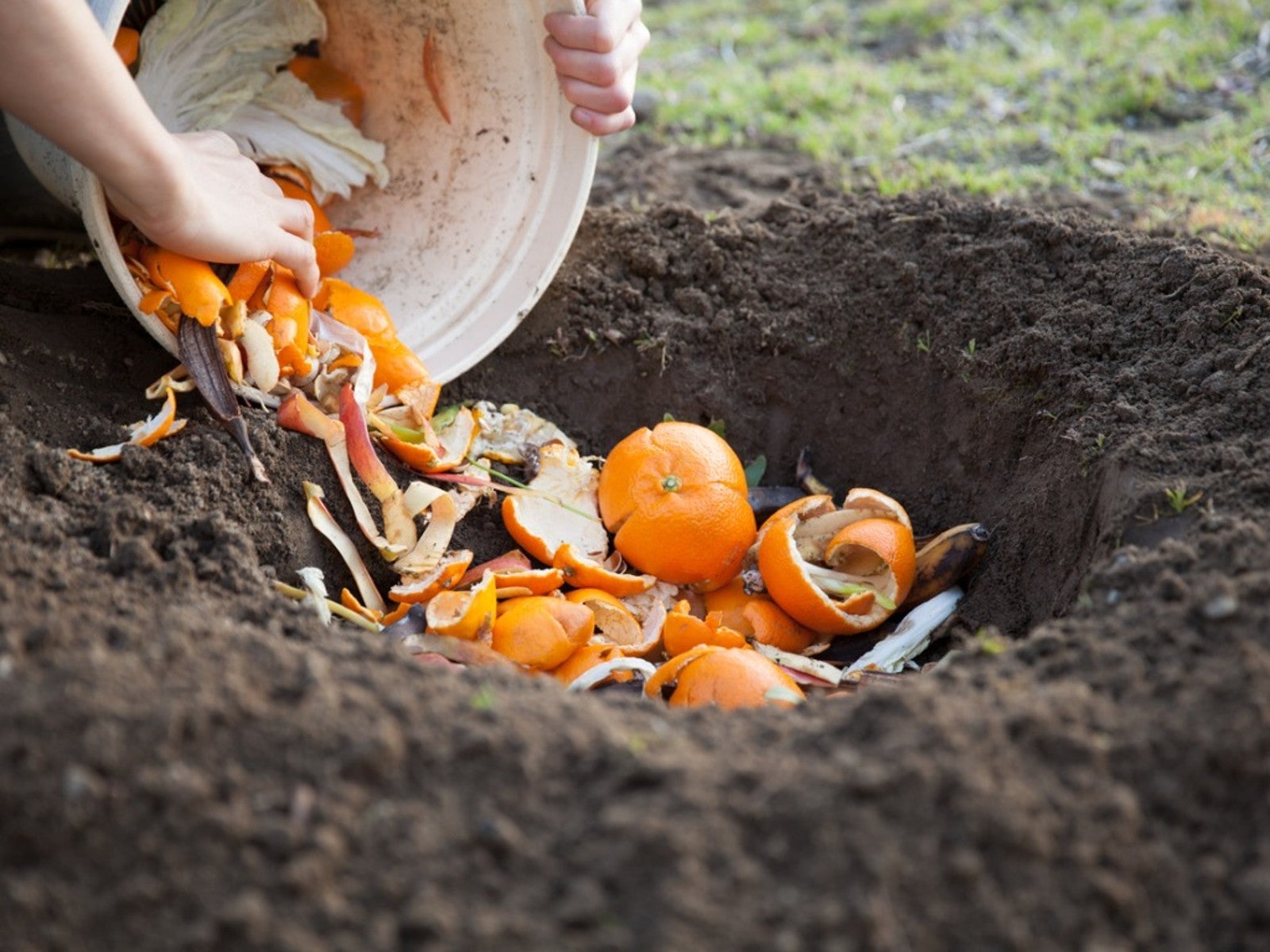How To Make Compost In-Ground


Let's say you want the benefits of adding homemade compost to your garden beds, but you're not too keen on an unsightly compost pile dominating your backyard. The same goes for compost tumblers. It's just too difficult to camouflage a plastic barrel in the garden setting. Making compost in the ground is an alternative method.
What is Subterranean Composting?
Like it sounds, subterranean composting is a method of decomposing organic materials by burying them in the ground. Not only do these methods allow gardeners to keep their compost out of sight, but there are additional advantages to composting in the ground:
- Less work – No need to make compost in one place, then transport it to where you'll need it. With an in-ground compost system, the decomposed organic materials are right where you want them.
- Nitrogen retention – Composting in the ground is a slower process which helps retain nitrogen levels. Additionally, above ground piles can lose nitrogen in run-off from heavy rains.
- Wider variety of materials – With subterranean composting, meat and other food scraps which attract rodents or pet waste can be safely broken down underground. It's not advisable to plant food crops over these areas, but ornamentals will benefit from this type of soil amendment.
How to Compost in the Ground
Compost can be made underground in either a trench or a hole. Either way, this compost pit should be 18 to 24 inches (46 to 61 cm.) deep to prevent animals from finding the kitchen scraps. It's not necessary to move the soil that is dug from the pit as it will be used to cover up the organic material.
Next, fill the bottom 6 inches (15 cm.) of the trench with organic materials. The materials will decompose faster if they are moist, so don't be afraid to soak them with the hose before backfilling the pit.
Finally, use the soil that was removed from the pit to completely cover the materials. To prevent rodents from unearthing kitchen scraps, be sure there are at least 18 inches (46 cm.) of soil covering the materials.
Amending Soil with Compost
In-ground composting is an excellent method for improving vegetable garden soil. Compost pits started in late fall are usually ready for spring planting. Be sure to mark where the organic material was buried. Then, plant heavy feeders, like tomatoes or corn, over the top of the buried compost.
If desired, garden compost trenches can be planted with a cover crop after backfilling in the fall. A cover crop can prevent soil erosion and weeds. The area is then turned under before planting food crops the next spring.
Gardening tips, videos, info and more delivered right to your inbox!
Sign up for the Gardening Know How newsletter today and receive a free copy of our e-book "How to Grow Delicious Tomatoes".
Subterranean composting can also be used to provide additional nutrients to fruit trees. Try composting in a hole in the ground by digging a series of pits in a circle just outside the drip edge of fruit trees. These can be filled with organic materials any time of year, and can be done one at a time as kitchen scraps are generated.

Laura Miller has been gardening all her life. Holding a degree in Biology, Nutrition, and Agriculture, Laura's area of expertise is vegetables, herbs, and all things edible. She lives in Ohio.
-
 Looking For Plants To Give You The Soft And Fuzzies? Try These 5 Fuzzy Leaf Plant Options
Looking For Plants To Give You The Soft And Fuzzies? Try These 5 Fuzzy Leaf Plant OptionsLovers of texture, drama, silver foliage and tactile plants will adore these special sensory garden additions. These fuzzy leaf plant options will leave you all aglow
By Susan Albert
-
 Get Ready For A Summer Of Hummers! Grow These Full Sun Hummingbird Plants and Flowers
Get Ready For A Summer Of Hummers! Grow These Full Sun Hummingbird Plants and FlowersIf you’re lucky enough to enjoy a sunny backyard, make sure you are maxing out on your pollinator opportunities and grow these full sun hummingbird plants and flowers
By Tonya Barnett